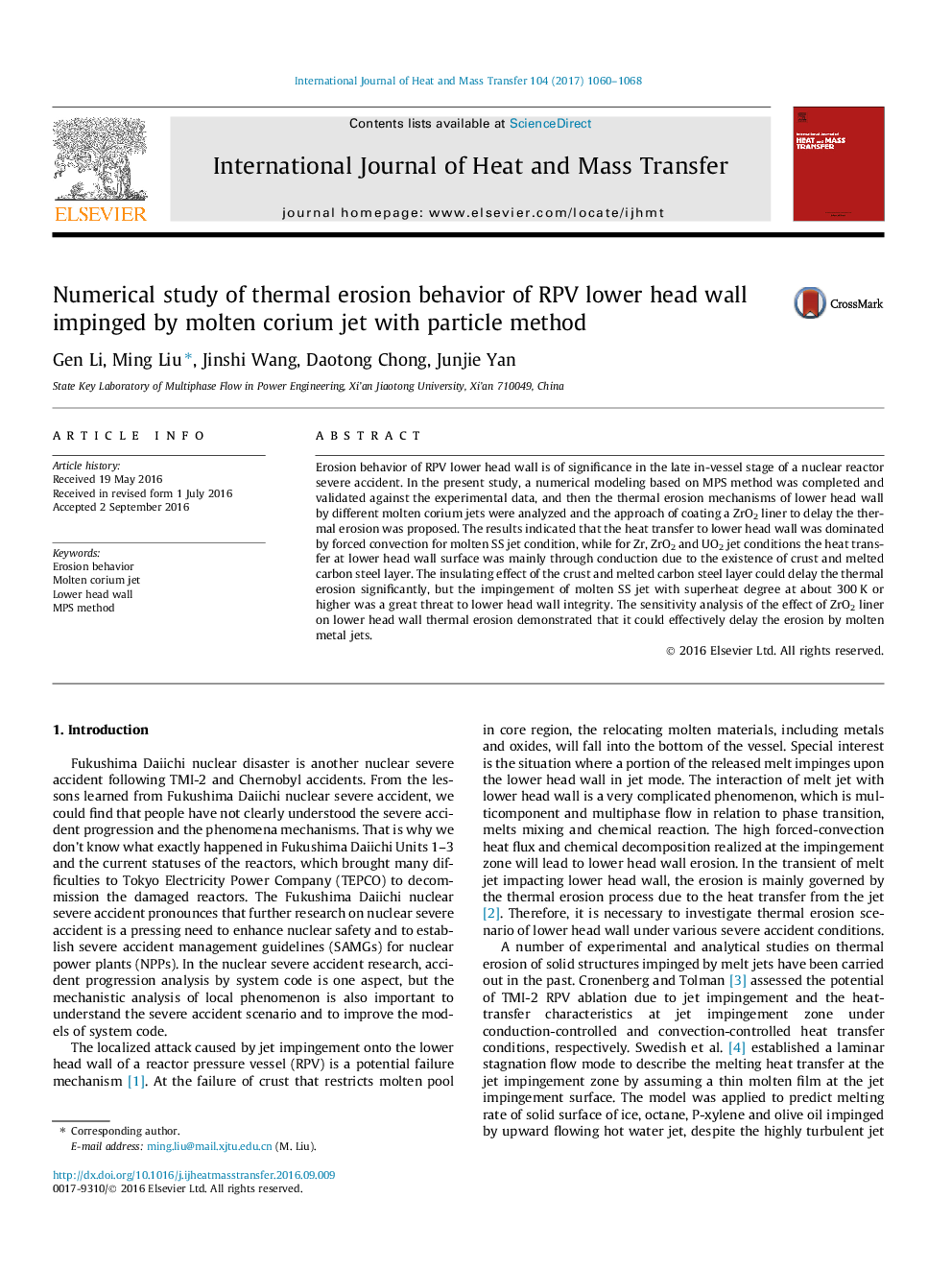| Article ID | Journal | Published Year | Pages | File Type |
|---|---|---|---|---|
| 7055074 | International Journal of Heat and Mass Transfer | 2017 | 9 Pages |
Abstract
Erosion behavior of RPV lower head wall is of significance in the late in-vessel stage of a nuclear reactor severe accident. In the present study, a numerical modeling based on MPS method was completed and validated against the experimental data, and then the thermal erosion mechanisms of lower head wall by different molten corium jets were analyzed and the approach of coating a ZrO2 liner to delay the thermal erosion was proposed. The results indicated that the heat transfer to lower head wall was dominated by forced convection for molten SS jet condition, while for Zr, ZrO2 and UO2 jet conditions the heat transfer at lower head wall surface was mainly through conduction due to the existence of crust and melted carbon steel layer. The insulating effect of the crust and melted carbon steel layer could delay the thermal erosion significantly, but the impingement of molten SS jet with superheat degree at about 300Â K or higher was a great threat to lower head wall integrity. The sensitivity analysis of the effect of ZrO2 liner on lower head wall thermal erosion demonstrated that it could effectively delay the erosion by molten metal jets.
Keywords
Related Topics
Physical Sciences and Engineering
Chemical Engineering
Fluid Flow and Transfer Processes
Authors
Gen Li, Ming Liu, Jinshi Wang, Daotong Chong, Junjie Yan,
